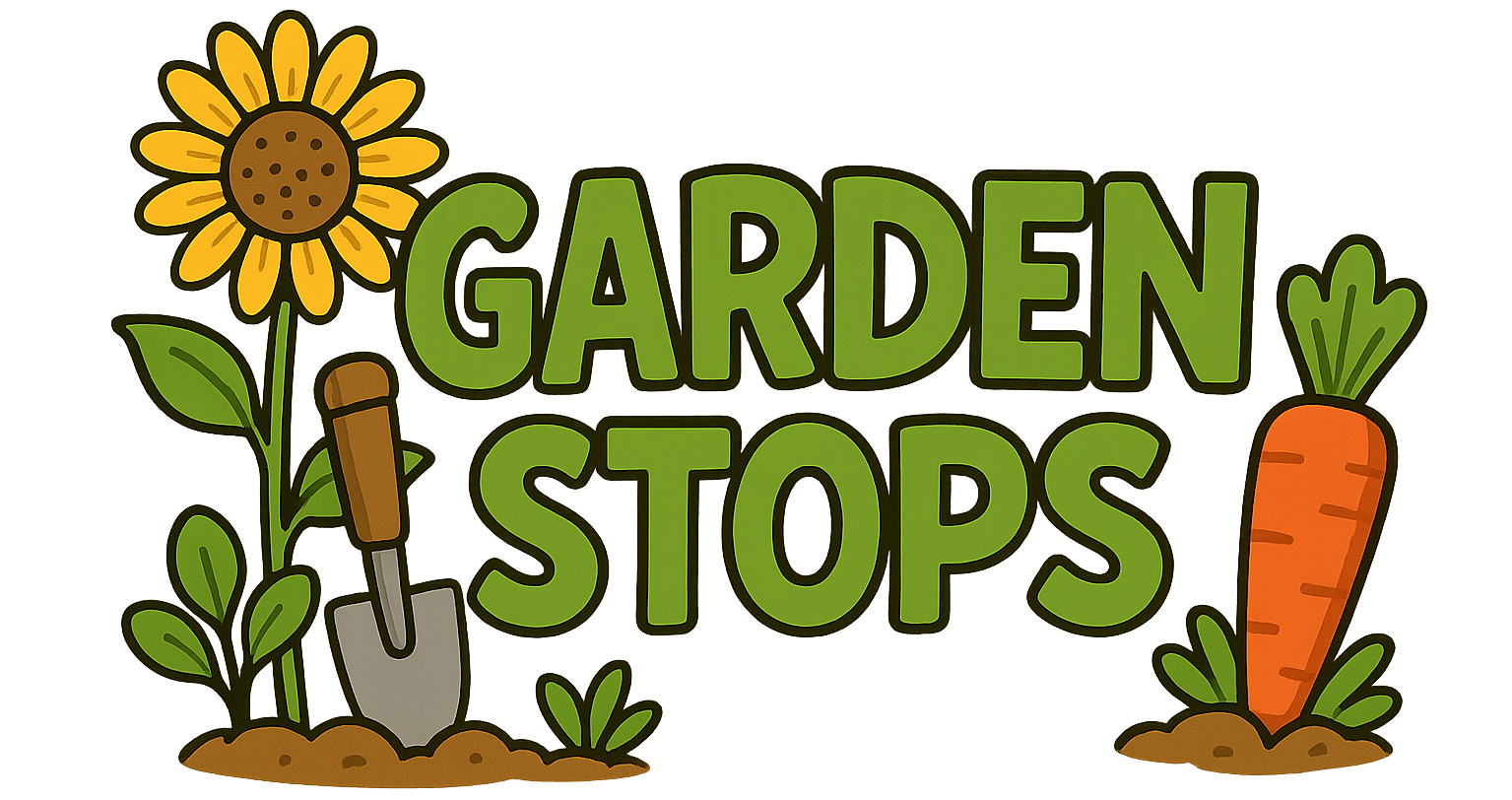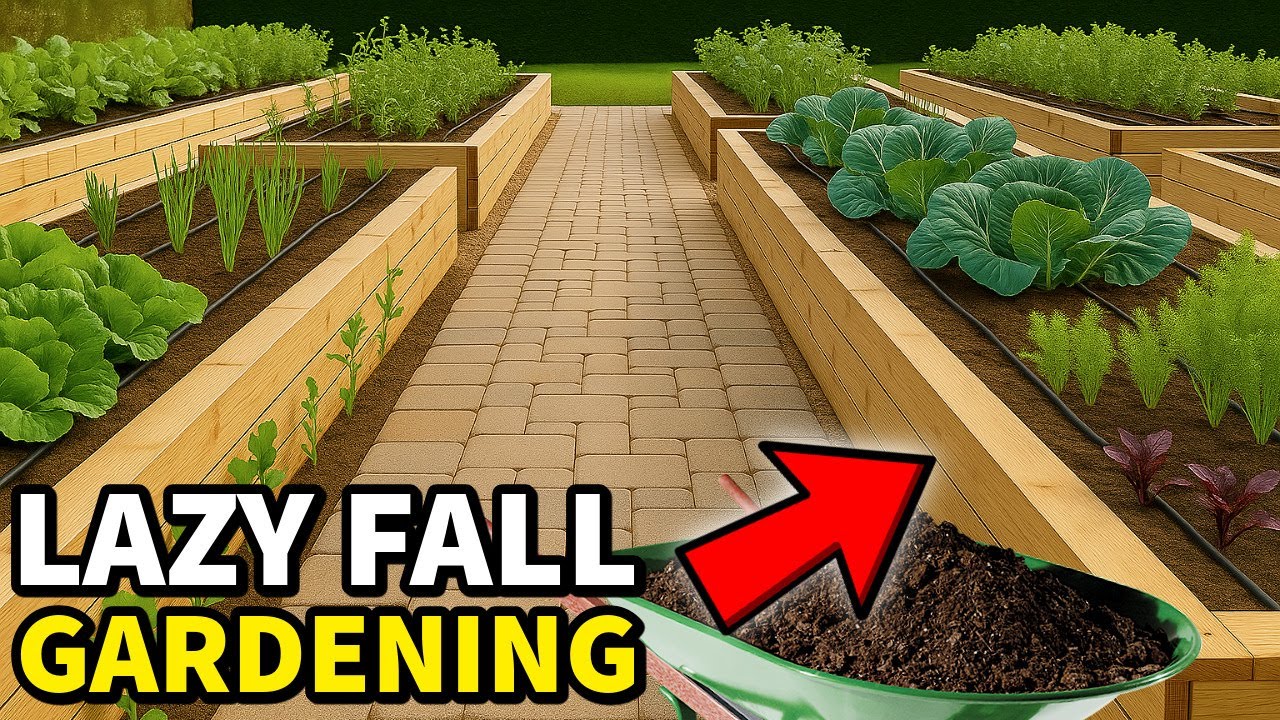Are you ready to transform your outdoor space into a vibrant fall garden? In this step-by-step guide, you’ll learn how to create a simple yet successful fall garden that will boost your curb appeal and provide stunning seasonal displays. Whether you’re a seasoned gardener or just starting out, these easy tips will help you grow beautiful fall blooms and hearty crops with confidence.
Introduction: Welcome to the Autumnal Garden Party
Ah, fall—the season when the air turns crisper, the leaves dazzle in hues of amber and scarlet, and there’s this unspoken shimmer of possibility swirling around. It’s also the perfect time to revamp that neglected backyard patch into a bountiful fall vegetable garden. Imagine gentle breezes ruffling rows of lush greens, and the satisfaction of plucking radishes that taste like childhood memories. Setting up a fall garden isn’t just about planting; it’s about inviting a bit of nature’s wonder into your daily routine—where you can enjoy beautiful weather, reduced pests, and an abundance that stretches into winter.
But perhaps you’re thinking, “Gardening in autumn? Isn’t that just for hipster pumpkin spice aficionados and pumpkin patch photo ops?” Au contraire. Fall gardening is an art—an elegant dance of timing, planning, and patience. It’s your golden ticket to a lush, productive garden that makes the most of the waning sunlight and cooler temperatures. And the best part? You don’t need a sprawling estate or a green thumb of infinite dexterity. A simple, thoughtful approach makes fall gardening accessible, rewarding, and surprisingly fun—like discovering your favorite sweater tucked away in the back of the closet every year.
So, grab your trowel, and let’s step into this season’s most charming, underestimated gardening adventure. Your backyard is waiting—not just to be looked at, but to be lived in, loved, and harvested from long after summer has packed up its sunhat and gone home.
Planning Your Fall Garden: The Blueprint for Success
Every grand adventure begins with a plan, and your fall vegetable garden is no exception. Think of it as creating a culinary tableau—a layout that ensures each crop gets its proper spotlight and resources. Before you get your hands dirty, take a leisurely walk through your space, contemplating sunlight patterns and wind corridors, and ask yourself, “Where would my plants like to hang out?” A thoughtful garden layout plan is your secret weapon against chaos and chaos-adjacent weeds.
Timing is everything—especially in zones like 8B, where gentle frosts flirt with your plants but don’t quite settle in. Determining the best time to plant hinges on local climate data—so do your homework, look up your USDA hardiness zone, and mark your calendar accordingly. For many in Zone 8B, late September to early October becomes an ideal window, giving you a head start before the cold truly makes its debut. Plant too early, and those tender seedlings may burn themselves out; too late, and you might miss the harvest window. This delicate dance means knowing when to sow your seeds for a victory lap of fresh produce.
Gathering your tools and materials—seed packets, soil amendments, garden staples—feels almost ritualistic. Use a garden layout plan to organize plant placement, ensuring taller crops like beans or trellised peas won’t cast shade on your delicate lettuce or radishes. Consider spacing to allow air circulation, which keeps pests at bay and prevents mold. If space is tight, grow bags or raised beds can be your best friends, offering mobility and control. With your vision mapped out, you set the stage for a smooth, productive planting process that feels as satisfying as a well-crafted recipe.
Starting Seeds and Selecting Easy Fall Crops
Seed starting might sound intimidating—like a culinary technique you only see on cooking shows. But in reality, it’s the gardening version of a confident first step, and it’s surprisingly straightforward. Germinate your seeds indoors, in a cozy corner where warmth and light combine into a comforting glow. Imagine tiny green nuggets sprouting under a grow light, whispering their readiness to join the big leagues outdoors. When seedlings are sturdy enough—usually after their first true leaves appear—it’s time to transplant, giving them a gentle start to their outdoor lives.
Now, choosing the right crops for fall becomes a matter of taste, ease, and patience. Think of crops like peas, beans, lettuce, carrots, and beets as your garden’s casual, low-maintenance stars—easy to grow and quick to reward. Basil and dill add some aromatic flair, turning your garden plot into a fragrant paradise. Radishes are the quick sires, often ready to harvest in just a few weeks—perfect for those eager to pluck something fresh and crunchy. These plants not only flourish in crisp autumn weather but also typically resist pests better than their summer counterparts, giving your garden an almost smug resilience.
Each crop has its own personality and needs—watering, fertilizing, and protecting. But overall, fall’s cooler temperatures and reduced pest activity make this the ideal time for beginner to seasoned gardeners to experiment. It’s a season where success feels like an unexpected gift, and each harvest is a small, tangible victory—like finding a twenty in an old coat pocket. With a bit of planning and some light care, your garden becomes a living testament to autumn’s simple pleasures.
Nurturing and Protecting Your Autumn Bounty
Now that your crops are planted, the real magic begins—tending and safeguarding your precious garden in a world of unpredictable weather and unwelcome creatures. Installing a drip irrigation system can turn watering from a chore into a choreographed dance—delivering just the right amount of moisture at the roots, conserving water, and reducing disease risk. Think of it as giving your garden a gentle, consistent drink, like a spa day for plants. If you prefer hands-on attention, a watering wand offers control, allowing you to quench thirsty plants without disturbing delicate seedlings.
Protection is the gardener’s armor. Building a PVC hoop house or installing shade cloth provides shelter from surprise frosts and insulates your plants during chilly nights. It’s like giving your garden a cozy sweater, extending the season just enough to squeeze out a few extra harvests. Insect netting and weed barriers serve as vigilant allies, warding off pests and pesky weeds that threaten to turn your lush oasis into a battleground. These barriers are simple to install but mighty in their protective prowess—like having a silent, tireless security team watching over your produce.
Supporting your plants with trellises, tomato tying twine, or sturdy fence posts ensures they grow tall and proud without flopping over or succumbing to the wind. Grow bags and garden beds offer flexibility, letting you optimize space and soil quality according to your needs. Regular pruning snips and watering wands become your trusty sidekicks, turning daily chores into moments of mindful connection with your garden. It’s not just about harvesting; it’s about nurturing a living, breathing masterpiece, one tiny leaf and tender root at a time.
Frequently Asked Questions
When is the ideal time to plant a fall vegetable garden in Zone 8B?
The best time to plant in Zone 8B generally falls in late September to early October, after the peak heat of summer has subsided. This timing allows seedlings to establish before the first frost, which typically occurs around late November or early December. However, it’s wise to consult local frost date charts or community gardening resources for precise timing, as microclimates can shift these windows. Starting early helps your crops develop strong roots, and planting too late risks missing the window for a full harvest.
What are some foolproof crops for a beginner’s fall vegetable garden?
Radishes, lettuce, carrots, beets, and peas are among the easiest and most forgiving options. Radishes grow quickly, sometimes ready for harvest in as little as three weeks, making them an instant gratification crop. Leafy greens like lettuce thrive in cooler weather and can be successive planted for a steady supply. Carrots and beets develop slowly but are remarkably hardy, and their sweet roots are worth the wait. Beans and basil can also flourish if given the right conditions, adding color and flavor to your fall garden.
How can I extend my growing season into winter?
Building a PVC hoop house or installing frost cloths are excellent methods for extending your garden’s productivity. These barriers provide insulation and protect delicate crops from unexpected frosts, keeping your plants cozy during chilly nights. Using a shade cloth can also shield plants from intense sun or strong wind, which sometimes persists into winter days. Employing organic mulches and organic fertilizers like bone meal or fish fertilizer boosts soil health, fostering strong growth despite the colder temperatures. With thoughtful infrastructure and care, you can harvest fresh produce well beyond the usual fall deadline.
What’s the best way to protect my crops from pests and weeds?
A combination of insect netting, weed barriers, and garden staples creates a formidable line of defense. Insect netting keeps pesky bugs away, reducing the need for chemical interventions and promoting organic practices. Using weed barriers suppresses the relentless march of invasive weeds, allowing your crops to thrive without competition. Garden staples secure these coverings, ensuring they stay in place despite wind or rain. Supporting plants with trellises and tying twine helps manage growth and enhances airflow, which reduces pest and disease pressure. Regular inspection and prompt removal of pests or weeds complete the cycle of vigilant gardening.
How should I fertilize my fall crops for optimal growth?
Utilize organic blends like all-purpose fertilizer, fish emulsion, bone meal, and trace minerals to nourish your plants. Applying a balanced organic fertilizer at planting time provides essential nutrients. Supplementing with fish fertilizer every few weeks promotes vigorous growth and adds nitrogen naturally. Bone meal serves as a slow-release source of phosphorus, supporting root development and flowering. Trace minerals—such as zinc, magnesium, and iron—are vital for plant health and can be mixed into the soil or foliar fed. Remember, over-fertilizing can be just as harmful as underfeeding, so stick to moderate, consistent feeding tailored to your specific crops.
Final Thoughts: Savoring the Autumn Harvest
There’s something inherently satisfying about nurturing a fall garden—an act of defiance against the shortening days and creeping frost. It’s a reminder that even as the world around us prepares to slow down, a small patch of earth can pulse with life, color, and promise. Whether you’re planting a few radishes in window boxes or transforming an entire backyard into a lush outdoor kitchen, fall gardening offers a unique blend of tranquility and excitement. It’s a seasonal ritual that rewards patience, ingenuity, and curiosity.
Perhaps the best part is the slow, deliberate harvest—the sense of connection to the earth and to generations past who understood the simple joy of growing what you eat. So, gear up, plan wisely, and let thrive your green ambitions beneath the amber light of autumn. Your garden may just become your favorite place to curl up, reflect, and reap the hearty rewards of a season well spent.

